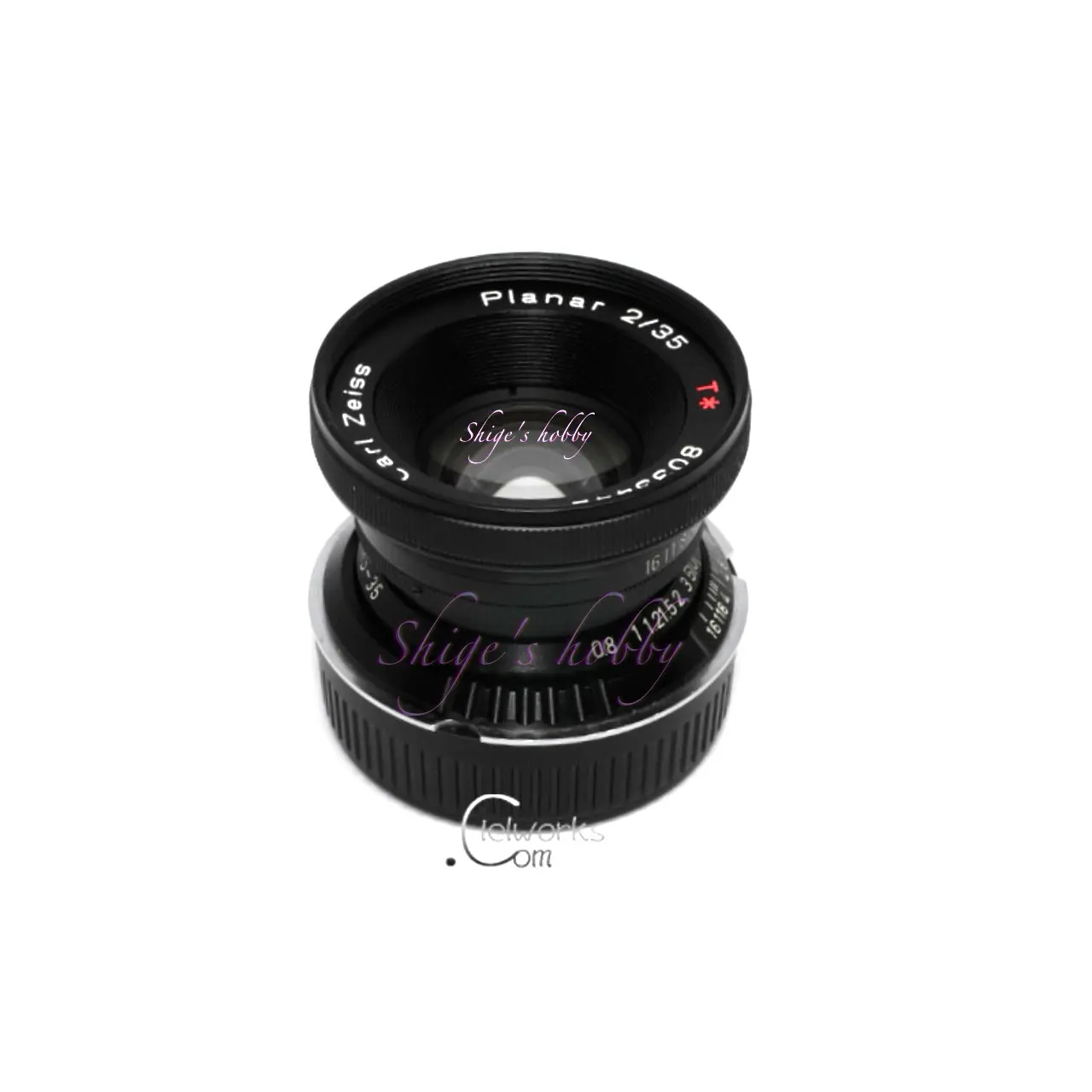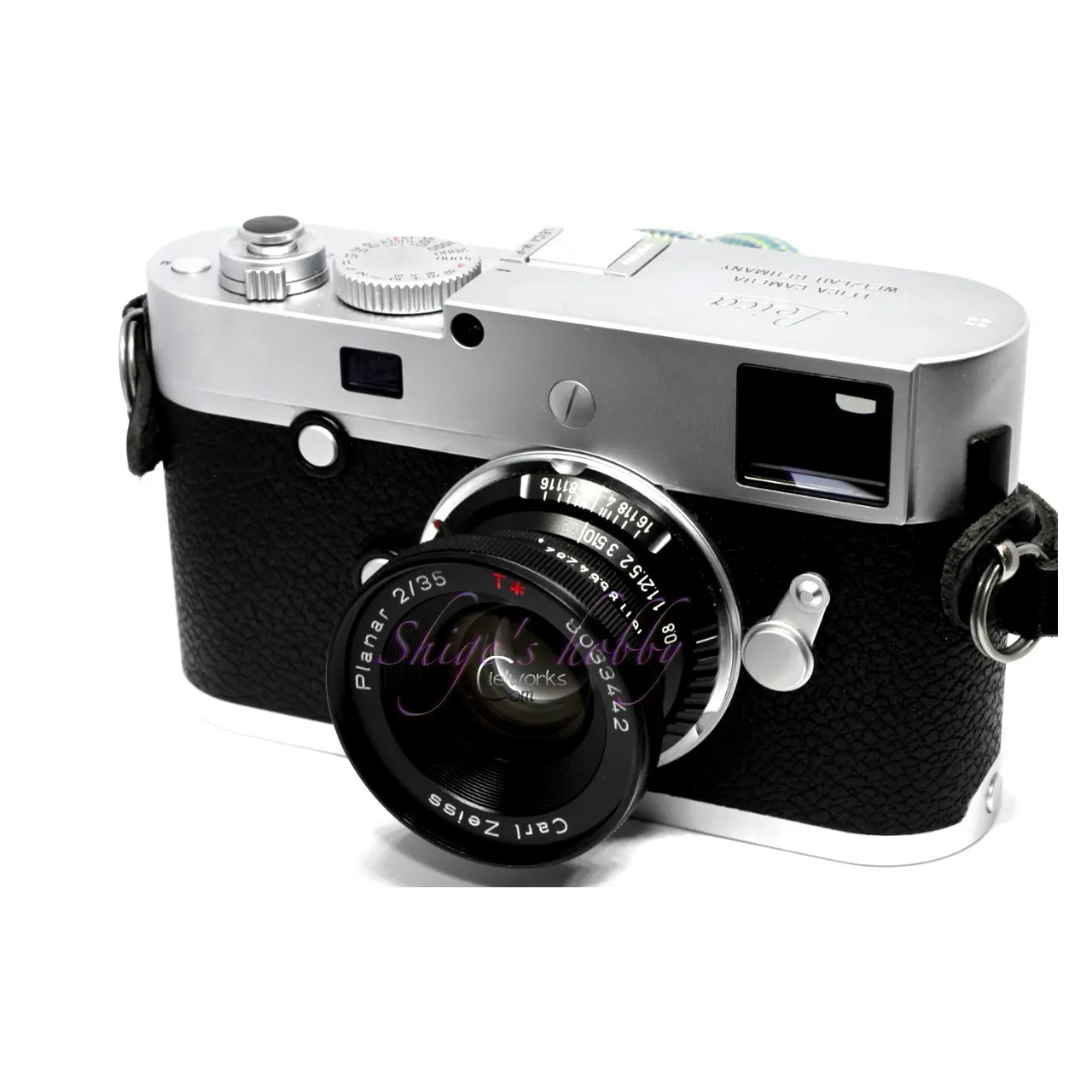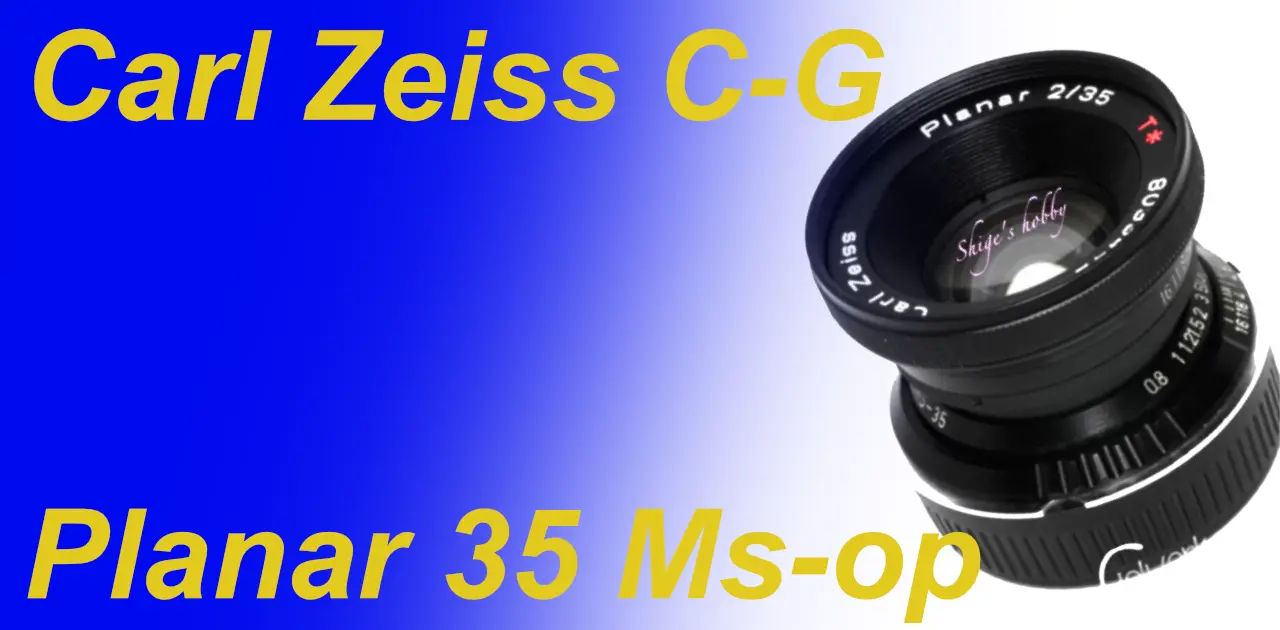Last updated on 2025-08-01
Kyocera CONTAX G PLANAR T* 35mm F2をMs-OpticsでMマウントに改造したレンズをライカMデジタルカメラで使用したレビューと写真作例
目次
ギャラリー
- 写真作例の撮影は、Leica M-P typ240
レビュー


1.概要
Planar T* 35mm F2は1996年に京セラがコンタックス G2とともにリリースしたオートフォーカスレンズ。
ここでは、Ms-optics(宮崎光学)にてライカ Mマウント(レンジファインダーカメラ距離計連動)に改造されたレンズについて紹介する。
本レンズはCONTAX G1、CONTAX G2でも使用していた。
それらを売ってしまったあと、MS-Optics(宮崎光学)に依頼してライカ Mマウントの距離計連動に改造した。
この改造レンズはMS-35という35mm用の共通ヘリコイドを使用している。
オリジナルレンズとMs-optics改造レンズの主な違いは以下の4点である。
- フード、フィルター枠の固定方式
- オリジナルレンズはフィルターを装着する鏡筒前部は直進移動するため、フォーカス時にフィルターが回転しないため、PLフィルターを使いやすい
- 改造レンズはフォーカス時にフィルターを装着している鏡筒が回転するため、PLフィルターを使いづらい
- 絞りのクリックストップ
- オリジナルレンズは1絞り毎にクリックストップがある
- 改造レンズはF2.8~16まで無段階絞り
- レンジファインダー距離計連動
- オリジナルレンズはGマウントなのでオートフォーカス(以下、AF)
- 改造レンズはライカM型カメラの距離計に連動
- 最短撮影距
- オリジナルレンズは0.5m
- 改造レンズは0.7m
オリジナル CONTAX G PLANAR 35mmの仕様は「CONTAX G PLANAR 35mm・Shige’s hobby」を参照のこと
2.使用感
Planar T* 35mm F2はプラナー形式なので、レンズ後玉とマウント面がほぼ同じ位置にあり、さまざまなカメラで使用する際に問題が少ない。作例にあるようにボケ身も美しく、癖の少ない描写で使い易いレンズだ。
Ms-Opticsの改造レンズは鏡筒ヘリコイド部分のMS-35にいくつかバリエーションがあり、所有している個体のMS-35は旧型でレンズ付け根の角度で浅いため、着脱時にレンズに対して指かかりが悪いため着脱がしづらい。
中古で見かけた場合は、カメラに取り付けて着脱に問題が無いことを確認したほうがよい。
MS-35の開発当初は、C・TESSで使われるKyocera Tシリーズのようなコンパクトカメラの非常に小さなレンズを想定した物となっており、本レンズのようにレンズ鏡筒が大きいレンズを装着することは想定していなかったように思われる。別ページで紹介する、Planar 45mm F2で使用されるMS-45はレンズの付け根が直角で、それなりの幅があるためレンズの着脱に苦労しない。
その後、新型のヘリコイドMS-35はこの付け根部が改良してあることを知り、ヘリコイド部分の変更をMs-opticsに依頼したところ、オーナーの宮崎氏から改造済みレンズのヘリコイドを入れ替えるのはレンズの構造上無理との言葉をいただき諦めた。
プラナー 35mmのMマウント改造は、海外でも広く行われており、改造レンズだけでなくヘリコイドだけを販売して、ユーザーが自己改造するメーカーも存在する(詳細は参考情報のWebサイトを参照のこと)。
3.まとめ
結論としてPlanar T* 35mm F2 Mマウントの改造レンズをまとめると、ライカMレンジファインダーカメラに装着して、二重像合致で使用したい場合は、Mマウント距離計連動の改造レンズを買うしか無い。
しかし、ミラーレスカメラで使う場合は、オリジナルのレンズをマウントアダプター経由で使うのがお手軽である。2020年代になってレンズ価格が上昇しているため、最新の35mmとどちらを購入するかは悩ましいところである。
仕様
| 項目 | HOLOGON | BIOGON | BIOGON | PLANAR | PLANAR | SONNAR | VARIO SONNAR |
| 焦点距離(mm) | 16.5 | 21 | 28 | 35 | 45 | 90 | 35-70 |
| 最大絞り | 8(固定) | 2.8 | ← | 2 | ← | 2.8 | 3.5-5.6 |
| 最小絞り | 16(フィルター装着) | 22 | ← | 16 | ← | 22 | ← |
| レンズ構成 | 3群5枚 | 7群9枚 | 5群7枚 | 5群7枚 | 4群6枚 | 4群5枚 | 8群13枚 |
| 最短撮影距離(m) | 0.3 | 0.5 | 0.5 0.8*2 | 0.5 | ← | 1.0 | ← |
| レンズ長(mm) | 11 | 35.5 | 30.5 | 31.5 | 38.5 | 63.0 | 54.0 |
| レンズ最大径(mm) | 57 | 59 | 56 | 56 | 56 | 56 | 60 |
| フィルター径(mm) | – 専用NDフィルターあり | 55 | 46 | 46 | 46 | 46 | 46 |
| 重量(g) | 120 | 200 | 150 | 160 | 190 | 240 | 290 |
| 重量(g) Mマウント | 124 | 151 | 194 (222)*1 | 115 | 161 | 219 (259)*1 | – |
| リリース年 | 1994年 | 1996年 | 1994年 | 1996年 | 1994年 | 1994年 | 1999年 |
*2:AVENON改造レンズの最短撮影距離
参考情報
- Zeiss Photography Historical Products(リンク先ページ中段にCONTAX Gレンズのデータシートあり)
- LEADERのWebサイト(改造レンズ、改造用ヘリコイドを販売しているFUNLEADERのサイト)
- WikipediaによるZeiss PLANARの説明ページ
- ツァイスイコンのすべて アサヒカメラ編 2005年7月10日発行(リンク先はAmazon.co.jp)
- CONTAX G PLANAR 35mm・Ads by Amazon
- AF Planar T* 35mm +CONTAX G1,G2・Shige’s hobby
更新履歴
- 2024.8.1
- 2024.02.16:改稿
- 2022.03.01:初稿
広告
- 本サイト表示の広告詳細は本リンク先に記載、本文中斜め文字のリンクはアフィリエイトリンク
- コンタックス・Ads by Amazon
- Ms-optics・Ads by Amazon
- コンタックス書籍・Ads by Amazon
- ツァイスイコンのすべて アサヒカメラ編 2005年7月10日発行・Ads by Amazon

Amazon Prime Sale



Be First to Comment